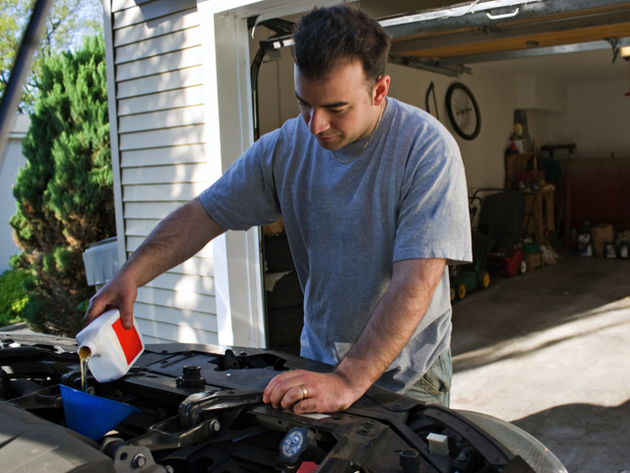
The host of the British TV series “Fifth Gear” conceded that what he was doing was “cruelty to cars” and should be an arrestable offense.
But he did it anyway. He drained the oil from a car’s engine and then took to the highway.
“So now it’s just a question of when the engine is going to conk out,” he said. “My nerves are already shot to pieces.”
And soon enough, so was the engine. It rattled, it stuttered, it seized. Without motor oil, “This engine has welded itself together,” the host lamented.
Obviously, most of us aren’t running on no engine oil, but “Fifth Gear” suggested that many cars operate with an insufficient amount. Visiting a shopping center parking lot, the host found that eight out of 10 cars needed more oil.
There’s no reason to believe the situation is different in the United States, either.
Leaking or burning oil
Motor oil serves three purposes:
• Lubricating the engine’s moving metal parts;
• Cleaning debris from the moving parts;
• Cooling the engine.
Even if you know nothing about cars, you probably learned early that engine oil should be changed every 3,000 miles.
That’s typically no longer the case, a New York Times article suggested, because “oil chemistry and engine technology” have improved so much. Today’s cars can go 7,500 to even 10,000 miles between oil changes.
But it’s not as simple as that. If you see oil on the floor of your garage or on your driveway, then your car may be leaking oil. But the engine also could be burning oil without your knowing.
The website cars.com said oil burning can result from “worn valve stems, guides and seals, and piston rings, all of which can allow oil to seep into combustion chambers.”
New cars with less than 50,000 miles typically won’t burn more than a quart of oil between oil changes. Once a car gets to 75,000 and certainly more than 100,000 miles, “increased oil consumption should be expected.”
That’s why it’s important to check the oil regularly, say every two months.
“Think of motor oil as the life’s blood of your car’s engine,” according to Consumer Reports. “Checking it on a regular basis is a key part of keeping your engine running well and getting the most miles out of it.”
And adding a little oil now and then is a whole lot cheaper than rebuilding an engine.
Here’s how to check the oil:
• Consult your owner’s manual and following the automaker’s recommendations. Some newer cars have electronic oil monitors, not traditional dipsticks.
• Park the car on level ground to get an accurate reading. With the engine off, open the hood and find the dipstick.
• Pull out the dipstick and wipe any oil off with a rag or paper towel. Then insert the dipstick all the way back into its tube.
• Pull the dipstick back out and see where the oil is on both sides. “Every dipstick has some way of indicating the proper oil level, whether it be two pinholes, the letters L and H (low and high), the words MIN or MAX, or simply an area of crosshatching. If the top of the oil ‘streak’ is between the two marks or within the crosshatched area, the level is fine.”
• If the oil level is below the minimum mark, you need to add oil.
• Use the grade of oil recommended in the owner’s manual. You can purchase it by the quart at auto parts stores and discount retailers.
• Remove the oil filler cap, usually on top of the engine.
• Add only a little oil at a time, possibly through a funnel to avoid spills. Start by adding only half a quart.
• Wait a minute and check the dipstick again. If the level is still below or near the minimum mark, add the rest of the quart.
• Typically, you won’t need to add more than a quart. Screw the oil filler cap back on securely. You are finished.
And that sure beats your engine being finished for lack of oil.
